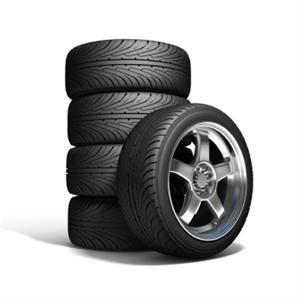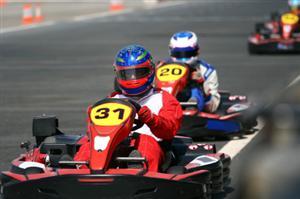| Complexity level: | 5 |
| Project cost ($): | 300 |
| Time required: | 4 days to prepare, 3 days for observation |
| Material availability: | Easily found |
| Safety concerns: | 1. Ensure the driver is properly trained to drive a go-kart. 2. Ensure that safety protective gear is used by the driver. 3. Inspect the tires before and after each race, to ensure they are still suitable for use. |
Hypothesis
Softer tires provide better traction and therefore enable a go-kart to complete laps around a go-kart circuit in a shorter time, than hard tires.
Overview
Tire types
Soft tires -these are tires made of relatively softer rubber. These tires provide very good traction but they wear out very quickly. Another disadvantage of soft tires is they are very expensive.
Medium tires -these tires fall between the soft tires and hard tires. They offer better traction than hard tires but are not as good as soft tires in terms of speed performance. They also last longer than soft tires.
Hard tires -these tires provide poor traction and therefore produce a slower speed, but are able to last longer.
Scientific Terms
Materials
The materials required for the experiment:
- 1 go-kart car (80cc, aproximately 9HP)
- 3 different race circuits with almost equal lap distance (1.0 km to 1.3 km)
- 3 different sets of tires (soft tires, medium tires and hard tires)
- Racing attire for the driver
- Stop watch to measure the time taken to complete the 3 laps
- 1 experienced go-kart race driver
Procedure
- For this experiment, the independent variable is the type of tires used (soft, medium and hard tires). The dependent variable is the time taken to complete 3 laps in each circuit. This is determined by using a stop watch to measure the time taken to complete the 3 laps. The constants (control variables) are the number of laps, the capacity of the go-kart and the skill of the driver. It is important for the go-kart driver to be very familiar with the circuit in order for this experiment to work.
- The experiment is carried out on 3 different go-kart race tracks to verify that the results apply to different track conditions.
- The go-kart is driven for 3 laps using the soft tires first. The total time taken to complete the 3 laps is timed using the stop watch and recorded in the table below.
- The go-kart tires are now replaced with tires of medium-hardness. The go-kart driver does another 3 laps around the same circuit and his timing is recorded.
- The go-kart tires are now replaced with to the hard ones. The go-kart driver does the last 3 laps around the same circuit and his timing is again recorded.
- The procedures 3, 4 and 5 are again repeated in the other 2 go-kart tracks and the results are recorded in the same table below.

Results
You should observe that the go-kart equipped with the soft tires will finish the 3 laps in the fastest time followed by the medium tires. The hard tires will produce the slowest time.
Use the table below to help record the results of the time taken to complete the 3 laps

Conclusion
The hypothesis is proven to be true. A go-kart with soft tires is able to travel more quickly than the same go-kart equipped with hard tires. This is possibly because of better traction produced by soft tires.
The types of tires used is an important consideration for race car drivers. The selection of tires by race drivers is based on race regulations, the race track conditions, safety conditions and the driver experience. Using soft tires with better traction enables faster speeds but necessitates frequent tire changes. Harder tires will last longer, resulting in fewer tire changes but optimum speed cannot be reached. Therefore the driver and his team have to decide which type of tire should be used at the appropriate time during a race.
Also consider
What would happen if the experiment was instead conducted on wet tracks?
How will different tire widths with the same hardness effect your results?
Does the temperature of the track affect your results?

